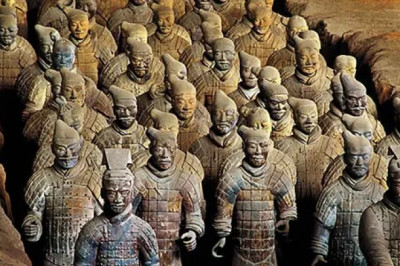
views
The origins of the guillotine
 A portrait of Joseph-Ignace Guillotin
A portrait of Joseph-Ignace Guillotin
According to the Guillotine Headquarters, the guillotine was first introduced as an idea in 1307, when a guillotine-like machine was used to kill a man named Murcod Ballagh in Ireland. In 1400, a machine known as the Halifax Gibbet was used to kill people by beheading, and it was also a beheading machine in England. Scotland later made a version of the Halifax Gibbet called The Maiden.
Dr. Guillotin, again, personally opposed the death penalty and sought the most humane form of punishment. He saw the guillotine as a punishment that didn’t involve dishonor to a family and a way for the victim to be “in no way soiled.” He advocated against any confiscation of a condemned person’s property, and he wanted the corpse of the deceased to be handed over to the family of the victim. The deceased would also be entitled to a normal burial. In his appeal to the General Assembly, Guillotin said:
“In all cases where the law imposes the death penalty on an accused person, the punishment shall be the same, whatever the nature of the offence of which he is guilty; the criminal shall be decapitated; this will be done solely by means of a simple mechanism.”
Guillotin, however, very much supported the actual beheading device:
“The mechanism falls like lightning; the head flies off; the blood spurts; the man no longer exists.”
The General Assembly approved the measure two years later to have the only punishment for the death penalty the severing of someone’s head. In 1792, Dr. Antoine Louis is credited with creating the first guillotine. He commissioned a carpenter named Guidon to build the scaffolds, and a man named Tobias Schmidt actually designed the machine.
For a long time, the guillotine was called a louisette after Louis. The name would have fit considering Louis XVI was one of the most famous decapitations by guillotine. However, since Guillotin advocated for the more humane form of punishment, the machine was named after him.
The first guillotine was set up on April 11, 1972. It was first tested on sheep and calves. They made sure the blade was curved like an axe to ensure maximum efficiency. The next day, Louis told a friend:
“That the beheading machine will not be ready for a test on human cadavres until Tuesday.”
Five days later, the guillotine was tested on cadavers and corpses. But male beheadings did not go so well with the blade. At this point, Louis and others decided the blade would be better as an oblique, which meant it should curve at a triangular, sloping shape. The new and improved guillotine was ready to be tested.












Comments
0 comment